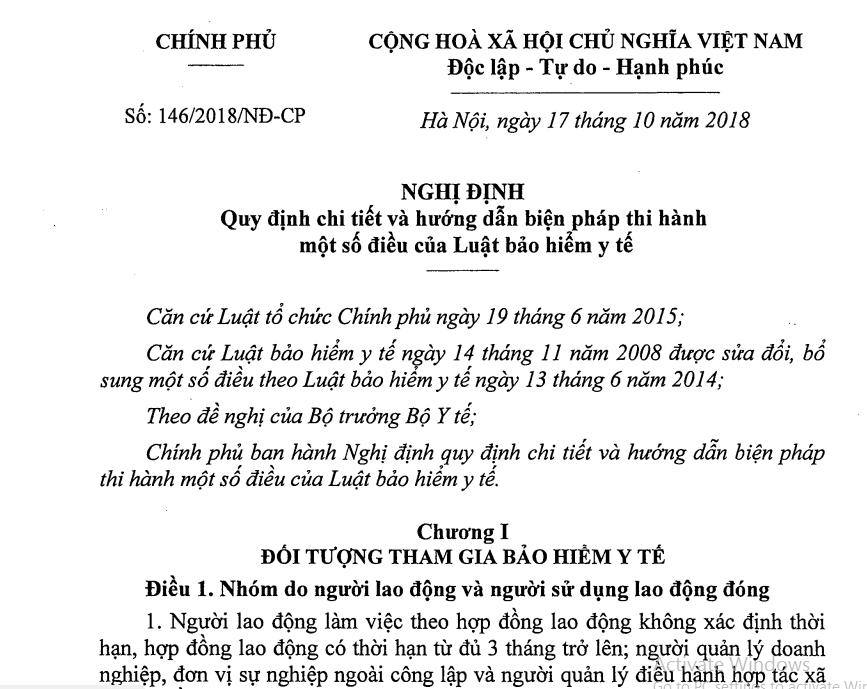Ensure the Schedule for Increasing Social Insurance Contributions
Increasing Social Insurance (SI) contribution rates is the most significant change in the 2014 Social Insurance Law effective from January 1, 2016. Currently, employees are required to contribute to Social Insurance based on their basic salary. For those receiving salaries from the state budget, it is the statutory pay rate multiplied by a coefficient. For employees in enterprises, it is the agreed-upon salary with the employer recorded in the contract, but not lower than the regional minimum wage.
From January 1, 2016, to December 31, 2017, the SI contribution rate is based on the salary plus allowances recorded in the labor contract. From January 1, 2018, SI contributions are based on the salary plus allowances and additional payments recorded in the labor contract. According to regulations, employees contribute 8%, while employers contribute 18%, making a total of 26% paid into the SI fund.
With the increase in contribution rates and the base for insurance contribution from 2016, a review of SI contribution rates has shown changes over the years since 2007.
Note: The SI contribution rates mentioned in this article apply only to those participating in all three types of insurance: SI, Health Insurance (HI), and Unemployment Insurance (UI).
1. Employees governed by salary policies set by the employer
Employees contributing to SI and HI according to salary policies set by the employer will have their monthly salary or wage basis for SI and HI contributions recorded in the labor contract.
The monthly salary used for mandatory SI contributions must not be lower than the current regional minimum wage at the time of contribution.
For employees who have undergone vocational training (including those trained by enterprises), the mandatory SI contribution wage must be at least 7% higher than the regional minimum wage. For those performing heavy, hazardous, dangerous, or especially heavy, hazardous, dangerous jobs, an additional 5% must be added.
The percentage rates for SI, HI, and UI contributions are shown in the table:


According to the plan to increase SI contribution rates, employers contribute 16%, and from 2010 onwards, they are required to contribute an additional 1% every two years until the rate reaches 18%. Employees' mandatory SI contributions start at 5%, with an additional 1% added every two years from 2010 onwards until the rate reaches 8%.
2. Employees governed by salary policies set by the State
For employees governed by salary policies set by the State, the monthly salary basis for mandatory SI contributions includes the salary according to rank, grade, military rank, and allowances for position, seniority over the frame, and occupational seniority (if any). This salary is calculated based on the statutory pay rate.
The monthly salary basis for mandatory SI contributions also includes the differential retention coefficient as prescribed by law regarding salaries.
The rates for SI and HI contributions for employees paid by the state budget are also ensured to increase according to the schedule.
Officials and public employees are not subject to UI contributions, so the table only reflects the percentage rates for SI and HI contributions:


The figures and charts above show the variations in SI contribution rates over the years. The increase in SI contribution rates is seen as very reasonable, as employees will accumulate more over time and receive higher pensions in old age compared to the present. Especially with the calculation of insurance from 2016 onwards, employees' benefits will increase since the benefit amount in the future is based on the contribution amount and duration. The higher the contribution, the higher the pension later.
For more detailed information, see:
- Articles 91, 92 of the 2006 Social Insurance Law as guided by Articles 42, 43 of Decree 152/2006/ND-CP;
- Clause 1, Section I, Part 2, Item 3, Part 2 of Decision 902/QD-BHXH in 2007, which regulates the administration of mandatory SI and HI contributions;
- Clause 1, Article 5, Articles 6, 12 of Decision 1111/QD-BHXH in 2011 regarding the administration of SI and HI contributions and the management of SI books and HI cards;
- Articles 5, 6, 14 of Decision 959/QD-BHXH in 2015 concerning the administration of SI, HI, and UI contributions; the management of SI books and HI cards.
 Article table of contents
Article table of contents
.jpg)




.Medium.png)
.Medium.png)
.Medium.png)
.Medium.png)
